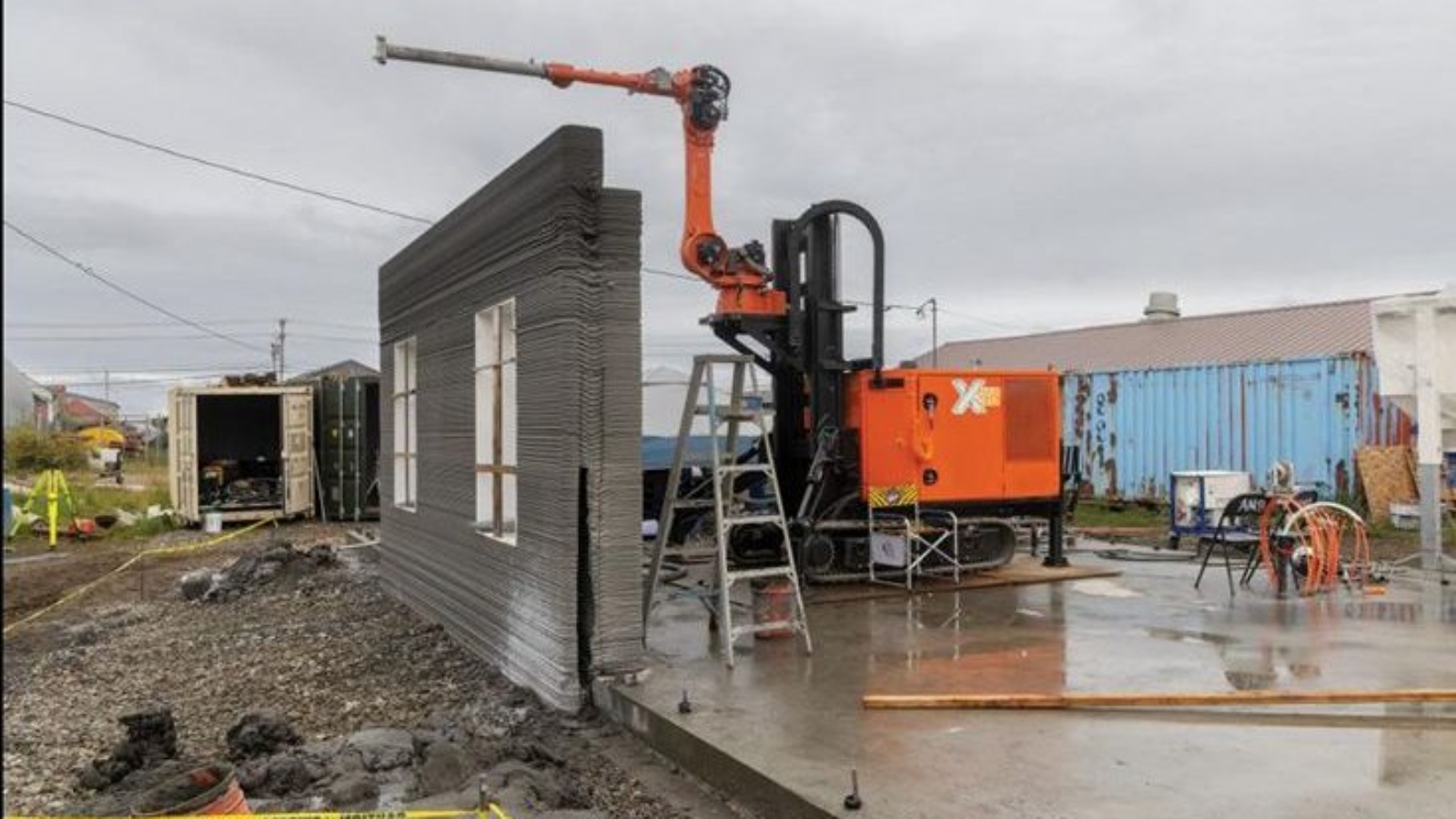A team led by construction robotics startup X-Hab 3D has completed the structural walls of a 3D-printed concrete home in Nome, Alaska — a first for additive construction in the region’s extreme coastal climate. Located on the edge of the Bering Sea, the site posed significant logistical and environmental hurdles, offering a real-world test of automation in remote housing applications.

A secondary mix supplied by Sika enabled work to resume, but by then, Nome’s fall weather had set in, with rain, 40 mph wind gusts, and temperatures dipping into the low 30s Fahrenheit. To maintain environmental controls, the team erected a heated plastic enclosure around the print area, anchoring scaffolding with super sacks to prevent wind lift.
Manufacturing on Demand
“We completed all four walls — a first for 3DCP [3D concrete printing] on the edge of the Bering Sea,” said Bruce Kraselsky, Co-Founder and CEO of X-Hab 3D. “The real story is what we learned and how we’ve grown: material quality is key — test and verify the mix before it hits the site. And adaptability is our core strength.”
The printer will remain in Nome for future builds, underscoring the project’s long-term intent to validate scalable, remote construction methods rather than serve as a one-off demonstration.
From an engineering perspective, the project highlights the trade-offs of automated construction in non-ideal settings. While 3D printing can cut labor requirements and reduce build time, its success hinges on mix calibration, machine consistency, and adaptability to unpredictable field conditions — especially in harsh climates.
The effort could inform future deployments of 3D construction printing in remote or disaster-prone areas, where traditional construction methods face significant cost and logistical barriers.
You might also like:
Vitruvian and SAOP 3D print homes in Chauncey, Ohio: The project, funded through SAOP’s Appalachian Community Grant from the Ohio Department of Development, includes three 3D printed houses and three more in partnership with Habitat for Humanity. SAOP Executive Director Madison Trace said the initiative addresses the community’s urgent housing shortage: “We’re hoping that we can provide really nice, energy-efficient, affordable homes for this area… and a safe space for our survivors.”
* This article is reprinted from 3D Printing Media Network. If you are involved in infringement, please contact us to delete it.
Author: Davide Sher


Leave A Comment